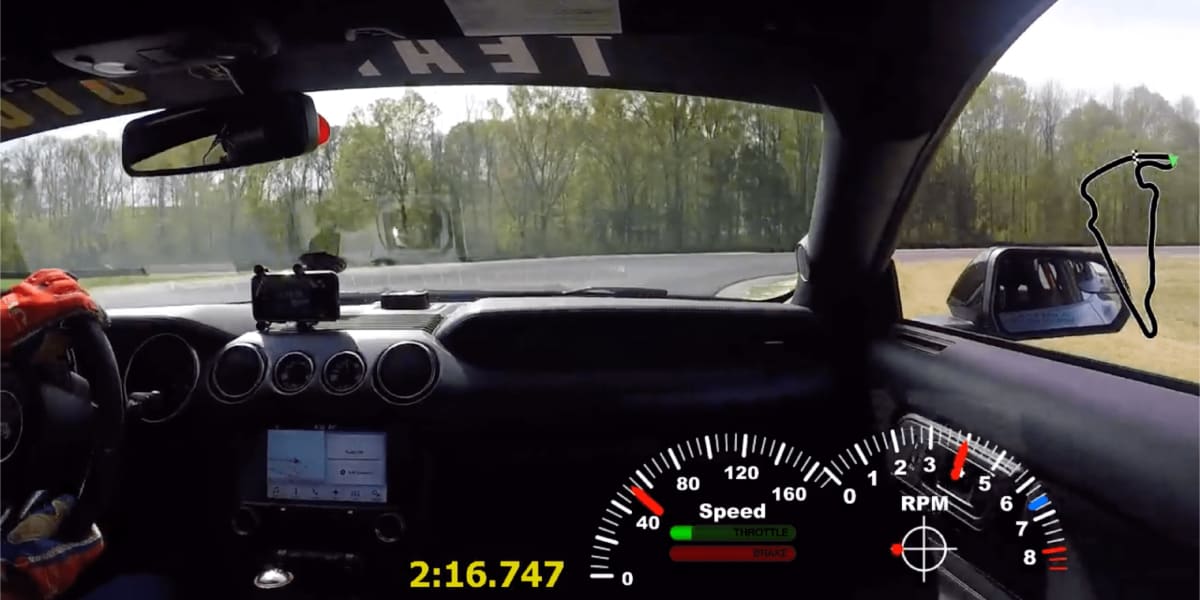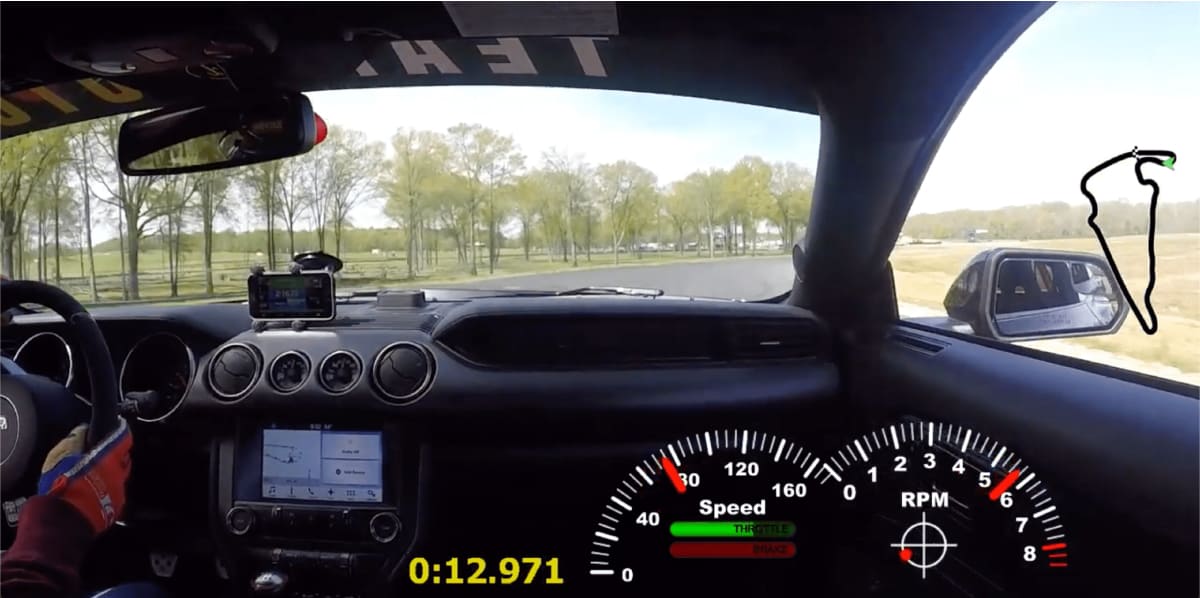A phrase our race car coaches at Blayze often hear from amateur drivers is, “I was taught that the earlier I get to throttle the better exit I will get.” Well, today we want to give away one of our biggest secrets. This statement is wrong in many, many cases.
It is short-sighted and does not take into account critical factors that are parts of maximizing corner exits. Factors such as when does the driver get back to full throttle? How much steering input does the driver still have in the car at the exit curb?
Today we will use screenshots from a driver we work with at Blayze to show how an early throttle application can actually hurt corner exits. We know internet skeptics love to point out the exceptions, so let’s just start this off by saying this will apply to MOST corners. There are some exceptions and are typically high-speed corners, but those are mostly exceptions to the rule, not the rule.

We will use turn 1 at Virginia International Raceway (VIR) in our example today. Before we can get to start speaking about corner entry, trail braking, or corner exit we need to make sure we look at the initial bake zone first. Here our driver has a nice initial brake application, not out-braking themselves and we are off to the perfect start on getting through this corner fast. All good so far!

Here we are looking at the initial turn in from our driver. Notice here they are still on the brakes, so they are trail braking a little bit. Exactly what we would like to see at this point!

As we move slightly further into the corner however notice our driver is already off the brakes and coasting into the corner. They have a small bit of trail brake into this corner, but I would not say this driver has a perfect trail braking technique.
We would really like to see a small amount of brake pressure all the way down to the apex here. Turn 1 is a very tight corner that also does not have a lot of grip on exit. So, we want that trail brake to keep weight on the front nose to help rotate the car so that we have a slightly different angle of the car at the same apex point.
This rotation will help point the car more down the road, rather than having the car pointed more towards the grass on the outside of the race track at the corner exit. This will allow the driver to start opening their hands earlier and hopefully get to full throttle earlier.

Here we see our driving starting to squeeze into the initial throttle and we are still about 2 car lengths before the apex. What we also see here is the driver is not finished turning, in fact in the next photo as they approach the apex you will see they have even more steering input.
The issue here is the driver is turning more, which is asking for the front tires to give them more grip to allow that steering to happen. But, at the same time, the driver is squeezing onto the throttle which is taking away front grip. They are essentially creating understeer from their throttle inputs which causes the driver to need to turn even further than they should need to.
If the driver keeps a consistent amount of throttle they will create mid-corner and corner exit understeer which will seriously delay the point at which they can get back to full throttle.
They may also be aggressive to throttle to use it to rotate the car. That additional steering input can cause corner exit snap oversteer and get a driver trying to rotate a car on the throttle in trouble. Using the throttle to rotate the car will also put a lot more heat into the rear tires and cause far worse tire degradation.
So, what we would like to see our driver doing here is continuing to brake, but with very light pressure. At this point in the trail brake technique, it should almost feel like we are just resting our foot on the brake pedal.

Here our driver is at the apex and you can notice they actually have slightly less throttle at this point. An important note for throttle application is we want a smooth, fast and consistent curve from zero percent throttle to 100 percent throttle. We never want to have to let off a little bit of throttle once we are starting the application. Even just a small adjustment will make a surprising impact on the stopwatch.
So, a big reason to delay the initial throttle is it allows a driver to use the trail brake technique. That technique essentially gives the front of the car more grip to roll more entry speed while forcing the driver to delay their throttle to a point to where they can have one smooth application of the throttle.
With anything there are limits, but that later throttle application can allow the driver to get to full throttle earlier which we will see a little bit later in this breakdown. So, if done right the driver in this breakdown would likely have a higher entry speed, similar minimum speed, and a better exit.

We see through the last few photos our driver did not get to heavy throttle to rotate their car on the throttle. Instead, they are spending quite a lot of time on maintenance throttle and having to increase and reduce their throttle many times to manage the understeer.
Why Does the driver reduce their throttle to help understeer? It has to do with weight transfer. Here is a great article on this subject:
At this point, we are past the apex and I would like to see a driver getting close to full throttle. Our driver is not able to do that because of their car angle. If you look closely they still have a very similar amount of steering wheel input as they did at the apex. They have not been able to unwind the steering wheel! Why? Because of that initial throttle application coming too early.
It is amazing how such a small input coming at the wrong moment can negatively impact so much. Managing the cars weight transfer correctly is so critical for race car drivers.
With that much steering input at corner exit, I would be very worried about corner exit oversteer becoming quite bad.

Here we see our driver finally back to full throttle. But, the car is not exactly where they want it to be. Are they able to keep full throttle? Let’s see what happens next...

Here we can see they had to lift back off that full throttle so they could get the car where they needed. This is where an early throttle will really hurt lap time, as the drivers who delay their initial throttle are typically back to full throttle earlier and are able to keep it full throttle!
Using Data To Visualize Throttle Technique Difference



















